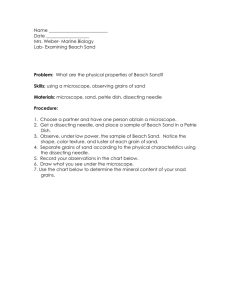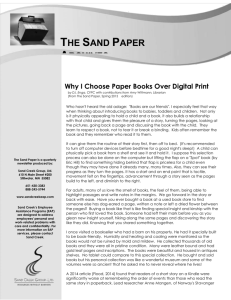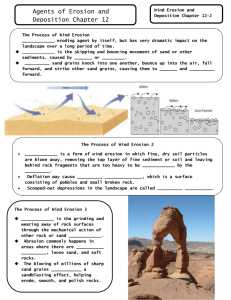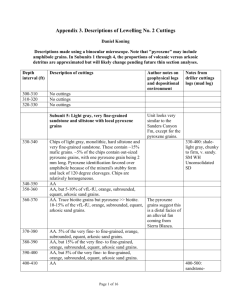File
advertisement
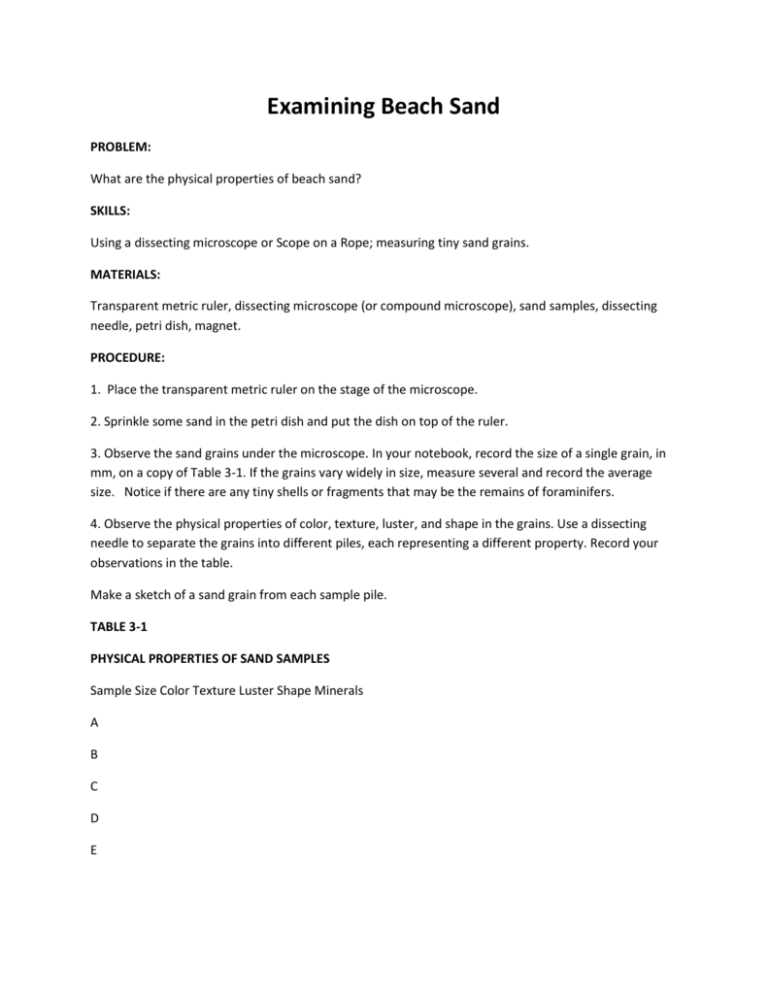
Examining Beach Sand PROBLEM: What are the physical properties of beach sand? SKILLS: Using a dissecting microscope or Scope on a Rope; measuring tiny sand grains. MATERIALS: Transparent metric ruler, dissecting microscope (or compound microscope), sand samples, dissecting needle, petri dish, magnet. PROCEDURE: 1. Place the transparent metric ruler on the stage of the microscope. 2. Sprinkle some sand in the petri dish and put the dish on top of the ruler. 3. Observe the sand grains under the microscope. In your notebook, record the size of a single grain, in mm, on a copy of Table 3-1. If the grains vary widely in size, measure several and record the average size. Notice if there are any tiny shells or fragments that may be the remains of foraminifers. 4. Observe the physical properties of color, texture, luster, and shape in the grains. Use a dissecting needle to separate the grains into different piles, each representing a different property. Record your observations in the table. Make a sketch of a sand grain from each sample pile. TABLE 3-1 PHYSICAL PROPERTIES OF SAND SAMPLES Sample Size Color Texture Luster Shape Minerals A B C D E TABLE 3.2 - MINERALS AND THEIR PHYSICAL PROPERTIES Mineral Physical Properties Quartz - Clear, glassy, resembles salt crystals, eroded from granite Feldspar - Clear, tan or gray, usually square, eroded from granite Hornblende - Dark gray to black, glassy Mica - Thin shiny flakes, silver gray to black Magnetite - Dark shiny triangles, clings to magnet, contains iron Garnet - Purple to red, angular, abrasive, used in sandpaper Olivine Olive- green, glassy Basalt - Gray to black, resembles lumps of coal Pyrite - Pale orange to yellow, metallic luster (like gold) Calcite - Opaque, glassy, composed of calcium carbonate, reacts with dilute HCl to produce bubbles of CO2 5. Place a small magnet in contact with the sand. Do the sand grains cling to the magnet? If the sand clings, iron is present. Identify the mineral in Table 3-2 that contains the element iron. Use this table to identify the minerals that match the physical properties of the samples you observed. Record the information in your copy of Table 3-1 OBSERVATIONS AND ANALYSES 1. Which type of sand would be a good source for magnetite—coral sand or volcanic sand? Explain. 2. What are the four physical properties of beach sand that are important for identification? 3. In what ways do you think the texture and shape of a sand grain are related to its source (where the sand is from; wave action; activities of organisms)?


